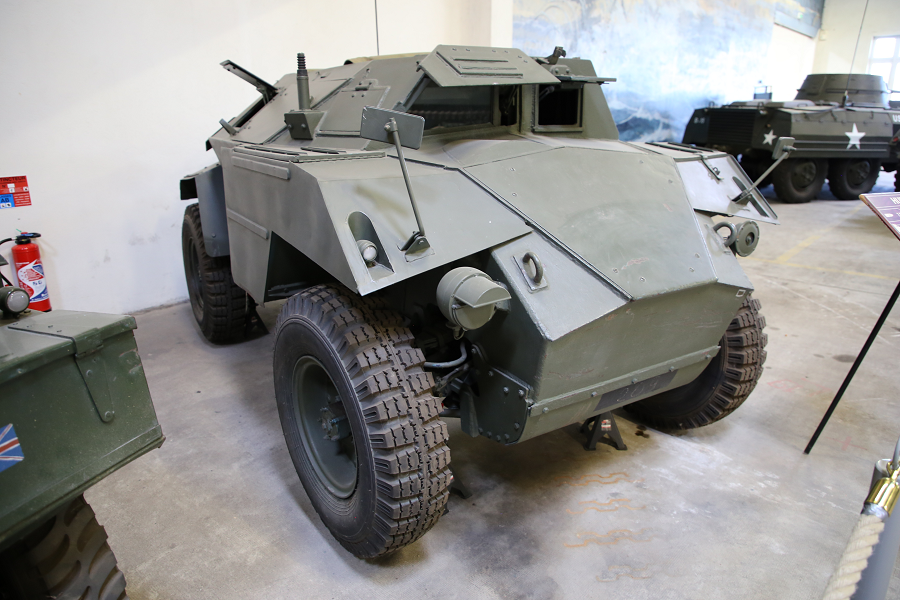The Humber Armoured Car was one of the most widely produced British armoured cars of the Second World War. It supplemented the Humber Light Reconnaissance Car and remained in service until the end of the war.
The Guy company did not have sufficient production capacity to produce sufficient Guy Armoured Cars as well as other vehicles, so shortly after war broke out the Rootes Group were approached to produce an armoured car – at the time the terminology “Tank, Light (Wheeled)” was used by the Army.
Working from the Guy design, Karrier designed a vehicle using as a basis their KT 4 artillery tractor chassis (already in production for the Indian Army) and the armoured body of the Guy Armoured Car. Karrier moved the KT4 engine to the rear and fitted welded bodies and turrets provided by Guy. As it had been based on proven elements, trials of prototypes passed without serious issues and an order for 500 was placed in 1940 and first deliveries made in 1941.
The Karrier name was dropped to avoid confusion with the British Universal Carrier tracked vehicle and the vehicles were designated “Armoured Car, Humber Mk 1” using the name of Humber Limited (another member of the Rootes Group) though production was by Karrier at the Luton works of Commer (another Rootes company).
The first Humbers were more or less identical to the Guy down to the faults in the armour, but this was later rectified.
The Mark III improved upon the Mark II by providing a three-man turret. Mark III production ended in 1942 after 1,650 had been built. With a possible replacement, the 2-pounder armed Coventry armoured car, on its way, the Mark IV was designed. This put the US 37 mm gun in the turret but at the cost of one crewman. The Coventry was not ordered as a replacement and so production of Mark IV continued, for a total of 2,000, despite its flaws.
Manufacturers: Rootes Group (Karrier)
The Rootes Group or Rootes Motors Limited was a British automobile manufacturer and, separately, a major motor distributors and dealers business. Run from London’s West End, the manufacturer was based in the Midlands and the distribution and dealers business in the south of England. In the decade beginning 1928 the Rootes brothers, William and Reginald, made prosperous by their very successful distribution and servicing business, were keen to enter manufacturing for closer control of the products they were selling. One brother has been termed the power unit, the other the steering and braking system.
Karrier was a British marque of motorised municipal appliances and light commercial vehicles and trolley buses manufactured at Karrier Works, Huddersfield, West Yorkshire, by Clayton and Co., Huddersfield, Limited. They began making Karrier motor vehicles in 1908 in Queen Street South, Huddersfield. In 1920, H.F. Clayton sold Clayton and Co’s Huddersfield business into public listed company Karrier Motors while keeping their Penistone operation separate. Mechanical and electrical engineers Clayton & Co Penistone, remain active in 2020 as Clayton Penistone Group.
Karrier produced buses as well as their other municipal vehicles and in latter years, especially during the Second World War, Trolleybuses, notably their Karrier ‘W’ model.
In 1934 Karrier became part of the Rootes Group where it retained its brand identity though the business was operated as part of Rootes’s Commer commercial vehicle operation. The Karrier name began to disappear from products when Chrysler bought Rootes in 1967. It was finally dropped in the early 1970s.












